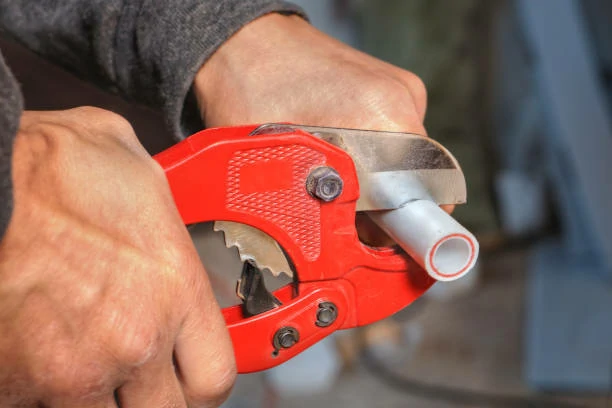Introduction
PPR piping systems have revolutionized modern plumbing and industrial applications with their durability, efficiency, and versatility. Made from polypropylene random copolymer, PPR pipes are renowned for their heat resistance, corrosion resistance, and long lifespan. This article delves into what PPR pipes are, their diverse uses, and how to choose the right manufacturer and supplier. Whether you’re a homeowner, contractor, or industrial planner, understanding PPR Pipe can help you make informed decisions for your projects.
What is a PPR Pipe?
A PPR pipe is a high-performance plastic pipe made from polypropylene random copolymer. This material offers exceptional strength, flexibility, and durability. PPR pipes resist chemical corrosion, making them ideal for transporting water and other fluids without contamination risks. Their resistance to rust and scale buildup keeps water clean and free from harmful substances. PPR pipes also withstand high temperatures, making them suitable for both hot and cold water systems, as well as heating applications.
These pipes come in various sizes, including 20mm, 25mm, 32mm, 40mm, and 50mm, which allows for versatile use in residential and industrial plumbing systems. For example, 25mm PPR pipes often serve in residential water supply networks, ensuring leak-proof joints and smooth water flow. Their lightweight design makes installation quick and efficient, saving time and labor costs. With a lifespan exceeding 50 years, PPR pipes deliver long-term value and offer a reliable, cost-effective solution for a variety of applications.
Uses of PPR Piping Systems
PPR piping systems are versatile and widely used in residential, commercial, and industrial settings. In residential applications, they are ideal for hot and cold water supply systems. For instance, 32mm PPR pipes are often used in apartment complexes for water distribution. In commercial and industrial settings, PPR pipes are used in heating systems, chemical transport, and compressed air systems. Their ability to withstand high temperatures and pressures makes them suitable for demanding environments. Additionally, PPR piping systems are used in underfloor heating due to their heat resistance and durability.
Choosing the Right Manufacturer and Supplier
Selecting a reliable manufacturer and supplier is crucial for ensuring the quality and performance of PPR piping systems. Look for manufacturers that comply with international standards like ISO 15874, ASTM F2389, and DIN 8077/8078. A reputable supplier should offer a wide range of products, including pipes, fittings, and accessories. For example, IFAN is a trusted manufacturer known for its high-quality PPR pipes and fittings. Ensure the supplier provides comprehensive support, including installation guidelines and after-sales services. Choosing the right partner guarantees a seamless experience and long-lasting results.

Benefits of PPR Piping Systems
PPR piping systems offer numerous advantages over traditional materials like metal or PVC. They are highly resistant to chemical corrosion, ensuring safe water transport. Their smooth inner surface minimizes friction, improving water flow efficiency. PPR pipes can withstand high temperatures, making them suitable for hot water systems. For instance, they handle temperatures up to 95°C without deformation. Additionally, PPR pipes are environmentally friendly, being recyclable and free from harmful substances. These features make them a sustainable and efficient solution for modern plumbing needs.
Installation of PPR Piping Systems
Proper installation is essential for the long-term performance of PPR piping systems. Begin by cutting the pipes to the required size using a PPR pipe cutter for clean, smooth edges. Use a welding machine to fuse the pipes and fittings together, ensuring a strong and leak-proof joint. For instance, 40mm PPR pipes require careful alignment and precise welding to create a secure connection. Properly aligning pipes and fittings before welding is critical to avoid misalignment, which could weaken the joints. This installation process ensures that the system remains durable, efficient, and free from leaks for many years.
Maintenance of PPR Piping Systems
Regular maintenance is necessary to keep PPR piping systems functioning efficiently. Periodically inspect the system for leaks, wear, or any signs of damage, especially at joint connections. Cleaning the pipes and fittings regularly helps prevent debris buildup, which can affect water flow and reduce system efficiency. Checking for blockages or any deterioration of the system ensures that the water quality remains high. For example, inspect a 40mm PPR pipe in heating systems annually for any signs of wear. With consistent maintenance and proper care, PPR systems offer long-lasting reliability and continue to provide efficient service for decades.
Conclusion
PPR piping systems are a reliable, durable, and versatile choice for various applications. From residential water supply to industrial chemical transport, PPR pipes offer unmatched performance and efficiency. By understanding their uses and selecting the right manufacturer and supplier, you can ensure the success of your plumbing projects. Whether you’re upgrading an existing system or starting a new installation, PPR piping systems provide a cost-effective and sustainable solution.
FAQs
1. What is a PPR pipe made of?
A PPR pipe is made from polypropylene random copolymer, a durable and heat-resistant plastic material.
2. What are the common uses of PPR piping systems?
They are used in residential water supply, heating systems, chemical transport, and underfloor heating.
3. How long do PPR pipes last?
PPR pipes have a lifespan exceeding 50 years, making them a long-lasting solution.
4. Are PPR pipes eco-friendly?
Yes, PPR pipes are recyclable and free from harmful substances, making them environmentally friendly.
5. How do I choose a reliable PPR pipe supplier?
Look for suppliers that comply with international standards, offer a wide product range, and provide comprehensive support.